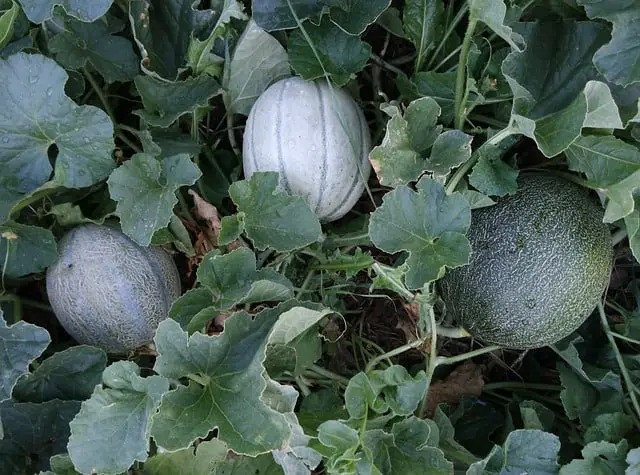Cantaloupe is a succulent summer melon that most don’t realize grows very easily in a garden. If you plan your garden right, you can end up with some of the best melons you’ve tasted with the right plants grown beside it.
There are some plants that can grow safely around cantaloupe and others that could harm your cantaloupe. The top 10 cantaloupe companion plants are ones that are also easy to grow, like the same growing conditions, and even end up benefiting your cantaloupe in multiple ways.
These companion plants can help each other stay healthy and flourish due to their compatibility. Many of the companions enjoyed most by cantaloupe are ones that help keep pests away.
You can end up creating a fantastic, colorful garden with a selection of delicious, fresh foods and some pretty flowers to look at too.
Top 10 Cantaloupe Companion Plants
The plants that can be grown next to cantaloupe are quite extensive. This gives you a lot of freedom to have a custom garden with plenty of your favorite things to eat that’s like a farmer’s market inside your yard.
You’ll just have to be careful that your melons and your other plants all have enough space to grow the way they need to.
See similar posts:
1. Basil
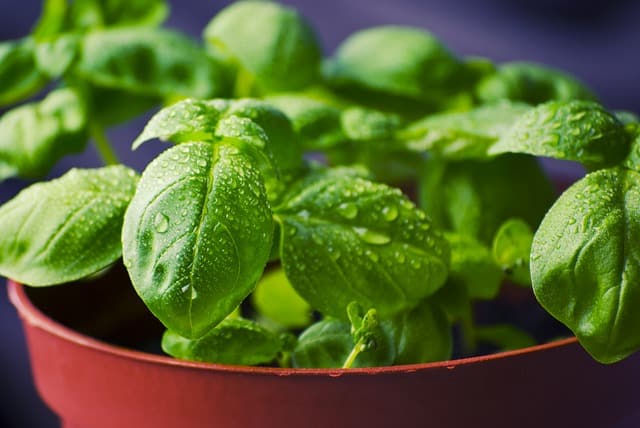
Basil is one of the best herbs to grow alongside cantaloupe because it manages to keep away the most dangerous pests for this melon, as well as many other melons. Since these plants also grow pretty small and close to the ground, they make sure your cantaloupe gets plenty of sun.
Mature Size: Basil can grow to be anywhere between 12 and 24 inches in height.
Flowering: Basil is safe to start planting in early spring once the frost has dissipated.
Key Features: Green leaves that grow opposite to the square stem, glossy leaves, slight aroma.
2. Marigolds
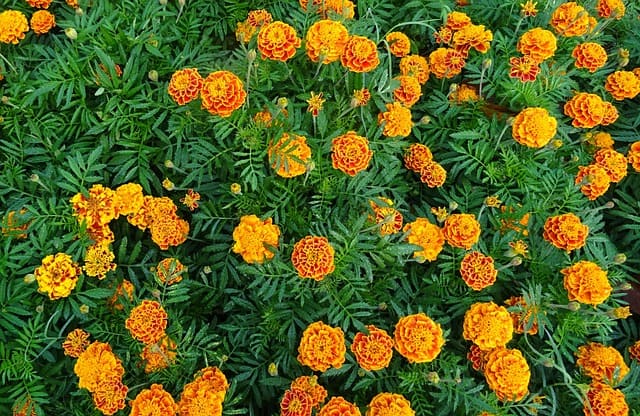
The marigold is a bright flower that mixes well with a lot of edible plants, including cantaloupe. The fragrance also makes sure that no bugs or pests that like this particular melon want to come around your garden.
Mature Size: Marigolds have a large variation in size; they can grow anywhere from six inches to three feet tall.
Flowering: The perfect time to plant these golden flowers is in spring, but they can be planted as far out as the middle of summer.
Key Features: Stunning gold, yellow, and orange flower petals, and very strong aroma.
3. Collard Greens

A collard green can make for a good border plant for cantaloupe, helping to fill your garden nicely without suffocating your melons. Furthermore, collards can also push away bugs like aphids that like feasting on cantaloupe.
Mature Size: A collard green plant can grow anywhere from 20 to 36 inches tall, and is usually ready to harvest when leaves are 10 inches tall.
Flowering: Collard greens can be planted in early spring or in the late summer.
Key Features: Large green leaves, dark in color, stiff and tough stems.
4. Lettuce
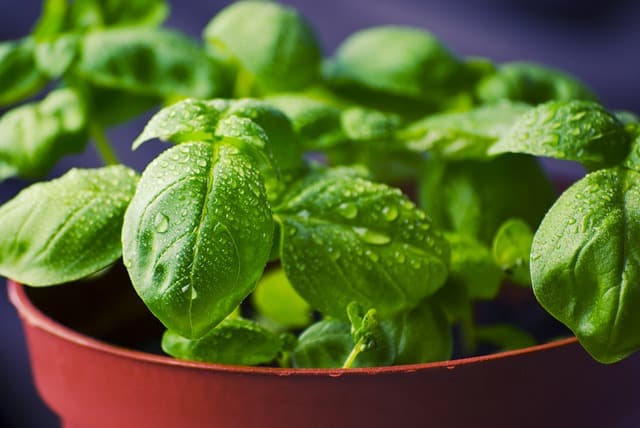
The nice thing about planting lettuce with cantaloupe is that when the cantaloupe needs room to spread, you’ll have already grown and harvested your lettuce. They grow at opposite ends of the year, so one won’t end up crowding the other as they spread across the ground.
Mature Size: When lettuce is mature, it tends to measure around five or six inches.
Flowering: Lettuce actually likes cooler weather, so planting it in the beginning of spring or fall is best.
Key Features: Tight bundles of leaves atop a very short and stubby stem, crunchy texture, typically varies in size and shades of green or red.
5. Bee Balm
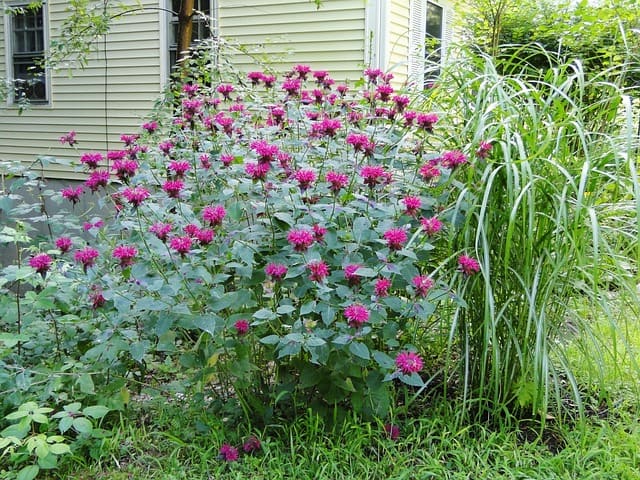
Bee balm flowers have the great power of bringing pollinators to your garden while simultaneously deterring pests. This can be of benefit if you want your cantaloupe to turn out especially sweet and juicy. It helps that the flowers themselves are also stunning and unique.
Mature Size: Bee balm flowers can grow up to four feet tall when mature.
Flowering: Plant bee balm in either spring or fall when the frost is completely gone from the ground.
Key Features: Skinny leaves that curve downwards, and flowers come in multiple colors from white to purple to pink.
6. Radishes
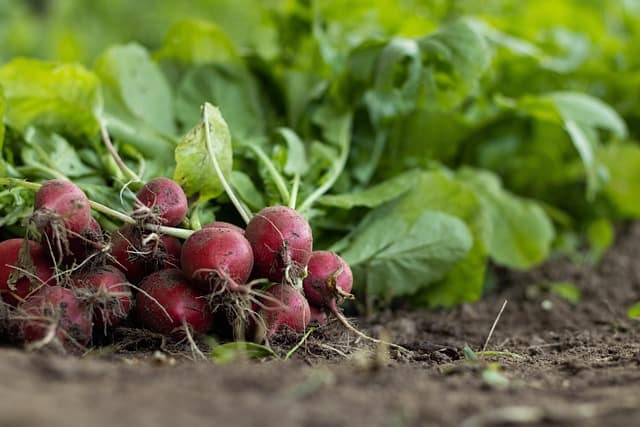
Radishes are best friends to many edible plants such as cantaloupes. They make sure weeds don’t have any space to grow since they cover a lot of ground. Furthermore, their leaves are delicious bait for aphids; aphids will be so busy eating these leaves that they won’t go after your cantaloupe.
Mature Size: Radish grow quickly, and they are mature when the radish itself is about 0.75 to 1.25 inches in diameter.
Flowering: Radish can be planted either in the spring or the fall.
Key Features: Radishes are usually a shade of red, but can also turn out white or purple. They grow with little stringy tails and long green leaves on the top.
7. Carrots
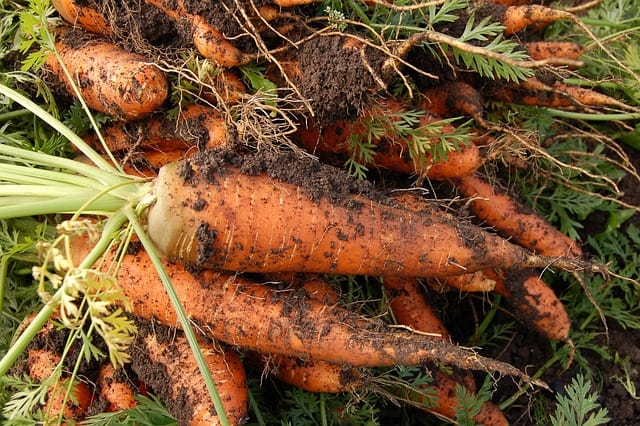
Carrots and cantaloupe go well together because they help each other out without preventing either from growing. Carrots make the soil nice and loose without stealing any nutrients that cantaloupes need, making sure weeds can’t take over your garden space.
Mature Size: Carrots take some time to grow to full size, which is when they are about 1 to 2 inches in diameter.
Flowering: Carrots can be planted in early spring right before the last frost of the season has ended.
Key Features: These long, orange vegetables grow in the ground, with thin green leaves growing out of the tops.
8. Onions
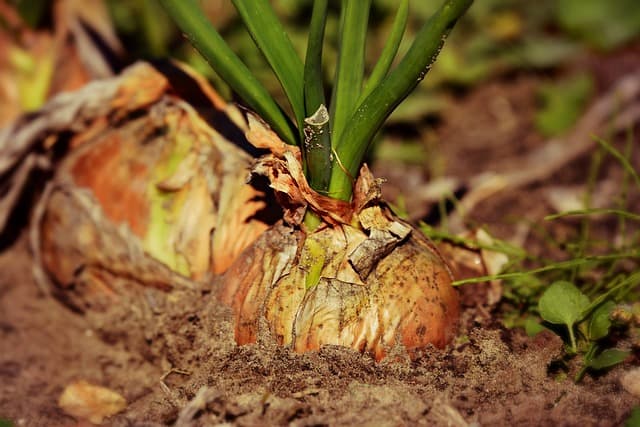
When you have onions beside your cantaloupes, they will make sure that none of the most dangerous pests for your melons get near it. They also grow in such a way that your cantaloupe will still get the sun it needs.
Mature Size: Onions are mature when they’re between three to four inches in diameter.
Flowering: Onions can be planted early in the spring, or even in late winter if you’re able to move the soil around.
Key Features: Onions grow underground inside a skin that can be multiple colors, with leaves on top that are usually tall and green.
9. Bush Beans

The bush bean will make sure your cantaloupe gets all the nutrients it needs to prosper. They do so by keeping your cantaloupe well fed, especially with how they introduce more nitrogen into the soil.
Mature Size: A bush bean plant can grow up to two feet tall.
Flowering: You can start planting bush bean plants in the middle of spring or the beginning of summer.
Key Features: Bush beans grow in tall, skinny stalks that stay very upright without needing any support.
10. Corn

Cantaloupe and corn mutually benefit each other based on their growing patterns. The corn will make sure that weeds don’t block your cantaloupe from growing as much as it needs to, while the corn helps give cantaloupe some shade when needed.
Mature Size: Depending on the variety of corn planted, a mature plant can grow anywhere between four to seven feet tall.
Flowering: Corn should be planted in the middle of spring.
Key Features: Corn grows in tall green stalks with curved leaves, and the corn grows inside an “ear” at the top of the stalk.
Effective Interplanting Strategies with Companion Plants – Maximizing Space and Yield
Interplanting is a valuable technique that can help gardeners make the most of their available space while increasing overall yield in cantaloupe gardens.
By strategically combining cantaloupes with compatible companion plants, you can optimize space utilization and create a productive and diverse garden.
Here are some effective interplanting strategies for cantaloupe gardens:
1. Vertical Interplanting
Cantaloupes have a vining growth habit, making them ideal for vertical interplanting. Planting companion plants that grow vertically alongside your cantaloupes allows you to take advantage of vertical space.
As the cantaloupe vines grow and spread along the ground, the vertical plants will grow upwards. This creates a mutually beneficial arrangement. Vertical growing plants will provide shade that helps to protect the cantaloupe vines from excessive sunlight.
2. Quick-Growing Interplants
Consider interplanting cantaloupes with quick-growing vegetables or herbs such as radishes, lettuce, or arugula. These are crops you can harvest early, giving you a yield before the cantaloupes fully take over the space.
By the time the cantaloupes start sprawling, you would have already harvested the quick-growing. This way, you’ll be making efficient use of the available space and ensuring continuous productivity throughout the growing season.
Summary
The top 10 companion plants for cantaloupe range from crunchy and leafy greens to a wide range of vegetables, and even some flowers. You can avoid a lot of pests that can make it difficult for your cantaloupe to its full potential.
With the right mixture of companion plants, you can end up with a garden that gives you delicious things to eat all year round.
Frequently Asked Questions
What Should You Not Plant Next To Melons?
While cantaloupes and other melons have a lot of great companion potentials, you shouldn’t plant them next to tomatoes, pumpkins, squash, peppers, and potatoes. Cantaloupes need a lot of space, so other plants that like to spread aren’t suitable.
How Much Space Do You Need Between Cantaloupe Plants?
Since you want your cantaloupe to have enough space to grow to their full potential, you want to give them at least 36 to 42 inches from each other. You can also use a trellis to encourage them to grow upwards, but the trellis will have to be big.
What Is The Best Month To Plant Cantaloupe?
The best month to plant your cantaloupe will depend on the climate where you live. Ideally, you’ll wait until after the final frost of winter, which can be anywhere from February to April.

Hey, I’m Lisa and I’ve been an avid gardener for over 30 years. I love writing, talking and living in the garden! Feel free to connect with me on my socials below

